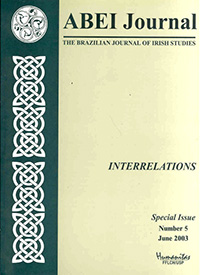Shaw’s Sculptress – Kathleen Scott
DOI:
https://doi.org/10.37389/abei.v5i1.182517Abstract
GBS once told Kathleen Scott, widow of the Antarctic explorer, who was sculpting Shaw, that the nearest he ever came to homosexual feelings was his love for her. She understood. Because of her vocation she seldom wore anything feminine – overalls at her vocation, sack-like garments with no adornment of any kind when at leisure. Beautiful, bohemian and uninhibited, with a host of male admirers from H. H. Asquith and David Lloyd George to James Barrie and Gordon Craig, she nevertheless reserved herself for a yet-to- be-found hero figure – who turned out to be explorer Robert Falcon Scott. Barrie would tell her that she was half man and half woman, but that the female half was twice as feminine as that of most women. She was in her middle twenties and as yet unmarried when Shaw first met her. He saw her often after her widowhood. A neighbor of his was a survivor of Scott’s last expedition. She had visited Apsley Cherry-Garrard, and Shaw was there. He made no secret of his feelings, and became the grandfather figure her little son, Peter, never had. During the Great War, Shaw saw much of her and Peter, as she turned to temporary war work, finally in Whitehall. As Lady Scott – a title she received as a widow – she could have had nearly any wartime job she wanted yet began in a munitions factory. In the 1920s, even after she married one-armed Great War hero Hilton Young, who became Lord Kennet, and had a late second son with him, Wayland Young, Shaw continued to remain a close friend. She was a guest at Lady Astor’s estate when Shaw read to the group, laughing at his own jokes, his new play The Apple Cart, which has two women Cabinet ministers who may have some of Kathleen’s traits. Even earlier, in one of his segments of the futuristic Back to Methuselah, the only sculptor in all of his plays, the cocky, self-confident Pygmalion, may also have some satiric touches at her expense. Although Kathleen, according to Shaw, “never played the grief-stricken lonely widow,” he never would tell her his true feelings about Scott’s “folly”: that the stubborn Scott died on his Polar journey and others with him because he “did what was done last time; and every thing he did was wrong.”
References
Cherry-Gerrard, Apsley, The Worst Journey in the World. London: Chatto and Windus, 1965.
Niven, Penelope. Steichen. New York: Charkson Potter, 1997.
Scott, Lady Kathleen, Self Portrait of an Artist. Lord Kennet (Ed.). London: John Murray, 1949.
Shaw, Bernard. Bernard Shaw and Alfred Douglas: a Correspondence. Mary Hyde, (Ed.). New Haven/
New York: Ticknor/Fields, 1982.
____. Bernard Shaw’s Rhyming Picture Guide to Ayot Saint Lawrence. Luton: LeagravePress, 1951.
Collected Letters, IV, Dan Laurence. (Ed.). London: Max Reinhardt, 1988.
____. What I Really Wrote about the War. London: Constable, 1931.
Weintraub, Stanley,
____. Private Shaw and Public Shaw. New York: George Braziller, 1963.
____. Journey to Heartbreak. New York: Weybright and Talley, 1971.
Wheeler, Sara. Cherry. A Life of Apsley Cherry-Gerrard. New York: Random House, 2001.
Young, Louisa. A Great Task of Happiness. The Life of Katherine Scott. London: Macmillan, 1955.
Downloads
Published
Issue
Section
License
Copyright (c) 2003 Stanley Weintraub

This work is licensed under a Creative Commons Attribution-NonCommercial 4.0 International License.


